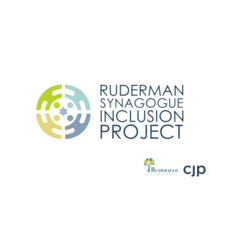Time Segment 1500 - 1800
Timelines in Jewish History 1000 BCE - 1925 CE
(1500 - 1800)
Author: Richard Strauss

Partitions of Poland View Map

1500 – 1800
- Major trends at the start of the 16th century that influenced the development of modern Europe and the course of Jewish history:
- The Renaissance was spreading rapidly from Italy to the rest of Europe, bringing new ideas of Humanism and man’s place in the universe.
- The fall of Constantinople spurred the opening of new trade routes to the East (and the incidental discovery of the Western Hemisphere), with the economic benefit initially to Spain and Portugal and later to England, France, and Holland. The trading cities of Venice and Genoa began a long decline.
- As demonstrated by the Turkish artillery at Constantinople, castles had become obsolete, accelerating the demise of the feudal system in western Europe.
- The disarray in the Catholic Church followed by the Reformation shattered the dominance of the Catholic Church in Europe. By 1648 nationalism replaced religion as the major driving force in European power politics and wars.
- The majority of the Jews expelled from Iberia settled in the Ottoman Empire, which welcomed the Jews for their skills in crafts, languages, medical knowledge, their international trading connections, and their wealth. The Ottoman sultan said, “How can Ferdinand be considered wise and intelligent? He is impoverishing his country and enriching mine.” Jews were permitted to live in virtually independent communities. Major settlements were in Anatolia and Greece. Salonika became a large Sephardic city, closely resembling in lifestyle former Jewish communities in Spain. At the time of the expulsions, Israel was unfortunately still controlled by the Mamluks and therefore unavailable as a destination. The Ottomans conquered the Mamluk Empire in 1517 and built the present Old City wall in Jerusalem in 1540. After the fall of the Mamluks, the existing Jewish community in Egypt was augmented by Sephardim, and a small but important Jewish presence was established in Israel, primarily in Safed. In Safed in 1570 Isaac Luria taught Kabbalah, an elaboration of the mystical ideas in “Zohar,” written in Spain by Moses de Leon in 1280. Joseph Karo in Safed at the same time produced “Shulchan Arukh.” In 1577 a Hebrew printing press was established in Safed, believed to be the first printing press in the Ottoman Empire.
- Another destination for the expelled Iberian Jews was the Papal States, particularly Rome, where during the early 16th century a worldly pope acted with vigor in asserting the long-standing Church responsibility to protect Jews from further harm. In 1517 Martin Luther traumatized the Church by initiating the Protestant Reformation. While Luther at first sided with the Jews as fellow protesters against the established Church, he swung violently in the anti-Jewish direction when it became clear that Jews were not going to convert to Protestantism any more than to Catholicism. In the Peasants’ War of 1524-1525, a large segment of peasants in Germany revolted against various privileged classes, including “priests, lords, and Jews.” As is repeatedly the case, any conflict within the dominant religion results in trouble for the Jews. When the Catholic Church reacted to the Reformation with the Counter-Reformation (1545-1618), the consequences for the Jews were particularly disastrous. At the Council of Trent (1545-1563), the Church condemned Protestantism as heresy, redefined Catholic dogma in contrast to Protestantism, and instituted harsh new restrictions on Jews, apparently with the intention of finally removing the long-standing embarrassing “Jewish heresy” from Europe by conversion or by economic strangulation. A new distinctive dress code was imposed on Jews. In 1555 walled ghettos were enforced by papal decree in all Catholic territories, including in Rome, virtually within eyesight of the pope. Ghettos were also generally adopted by most Protestant German duchies.
- Jews had been freely admitted to Poland-Lithuania since the 14th century. The opportunity was embraced by many German Jews during periodic expulsions and also by voluntary emigrants. In the relatively backward Polish economy, Jews formed the new middle class between the landed proprietors and the peasantry. The power of the landed nobility increased relative to the Church-supported royalty, and the opportunities for the Jews in commerce developed in parallel. The Jews acted as export agents for the landlords, import agents for textiles and luxury items, and distributors of merchandise in the villages and towns. Their widespread personal and commercial connections abroad gave new vitality to the economic life of Poland. German Jews expanding their reach in Poland encountered a well-established much larger population of Jews in the south (the present Ukraine). A Jewish quarter had existed in Kiev since the 11th century. The descendants of the Khazar Jews very likely contributed substantially to the numbers. The superior learning and culture of the German Jews was assimilated by the indigenous Jews, as was the Yiddish language. In 1503 the Chief Rabbinate was established in Poland, and in 1534 the first Yiddish book was published in Krakow. Moshe Isserles (Krakow, 1525-1572) produced a version of “Shulchan Arukh” adapted for Polish Ashkenazim. The first Yeshiva was founded in 1567. The learning was strongly influenced by Talmud and Kabbalah. The Council of the Four Lands was established in 1580 to administer issues affecting the Jewish community, which functioned as a semi-autonomous community throughout Poland-Lithuania. With a strong Polish government and a prosperous Jewish community, the period to 1648 was termed “The Golden Age of Polish Jewry.” In 1648 the population of Jews in Poland was 450,000, 60% of the total worldwide Jewish population of 750,000.
- The Ottoman Empire continued to expand in Europe and North Africa in the 16th century, attacking Vienna without success in 1529 and 1532, but in 1535 capturing Baghdad from the Persians and Tunis and Algeria from Spain. In 1571 Spain defeated the Ottomans in the naval battle of Lepanto, marking the beginning of the centuries-long decline of the Ottoman Empire. As the administrative efficiency of the empire declined, the Jewish and other non-Moslem communities suffered from religious persecution and poverty.
- During the 16th century Catholic Spain was the dominant power in western Europe, primarily as a result of extracting wealth from the Western Hemisphere. Spain adopted the mission of defending the Catholic faith everywhere against Moslems, Protestants, and Jews. The first defeat of Spanish power came from the Protestant Netherlands, which in a long war (1568-1609) achieved independence from Spain. To augment their banking and trading capabilities, the Dutch, who were already active traders with northern European countries, welcomed the immigration of prosperous Portuguese Sephardim, who for the most part resumed practice of Judaism. In 1588, attempting to restore a Catholic monarch to England, Spain launched the disastrous Armada and subsequently declined to a second class power. It is interesting to note that the continuing impulse to “purify” Spain resulted in 1609 in the expulsion of the Moriscos, descendants of Moslems who had converted to Christianity in 1502––an equal-opportunity expulsion.
- In Germany, from the start of the Counter-Reformation in 1545, a series of small conflicts broke out between Catholic-leaning and Protestant-leaning duchies of the Holy Roman Empire. The Peace of Augsburg (1555) divided Germany into Lutheran and Catholic states. However, the agreement did not in fact achieve peace. By 1609 Catholic and Protestant leagues were formed. The conflict was ignited in 1618 when the Bohemian (Protestant) ruler literally threw the Austrian (Catholic) ambassadors out of a tall tower (the defenestration of Prague). The war continued with occasional lulls for 30 years, initially as a religious war between the major Catholic and Protestant states, and finally as a nationalistic war, with combinations of Catholic and Protestant states on both sides attempting to gain pieces of German territory. The Treaty of Westphalia (1648) restored the Catholic/Lutheran division which had been stipulated by the Peace of Augsburg. [Jacob Riis, interviewing Bohemian immigrants in New York City in the 1880’s, found that they were still conflicted by the fact that during the Thirty Years War they had been forced to accept Catholicism despite their Protestant leanings.] The entire Thirty Years War had been fought on German territory by armies of outside powers and mercenaries who lived off the land. Germany was devastated, its population reduced by half. There were 360 principalities in the (virtually defunct) Holy Roman Empire, and the leaders of many of them now competed for advantage in restoring the economies of their realms. One way to accomplish this was to permit “selected” Jews to resettle in or near the major cities to bolster finances and trading relations. Permission for Jews to settle varied from principality to principality, and also could be withdrawn and then restored in a given principality. A major continuous Jewish presence was established at Hamburg and later at Berlin. Jewish banking in Germany was initiated in the period after 1648. With the deterioration of the situation for Jews in Poland after 1648 and the marginal improvement in Germany, the Jewish population in Germany rose to 300,000 by 1700.
- During the first half of the 16th century, Muscovite Russia expanded into the Volga and Caspian regions, The Russian state was still relatively weak, and Moscow was sacked by the Crimean Tatars (Mongols) in 1571 and by the Poles in 1603. The Romanov dynasty was established in 1613 (it continued until 1917), and the Poles were expelled from the Moscow territory. Jews were not permitted to settle in territories controlled by Muscovite Russia. In 1648 a series of disasters struck Poland and especially the Jewish community. From 1648 to 1655 Cossacks in the Polish Ukraine massacred 65,000 Jews. In 1665 the Cossacks switched their allegiance from Poland to Russia, giving control of the Ukraine to Russia. From 1655 to 1658 Poland was invaded by Russia in the east and by Sweden in the west (“the Deluge”). The central governmental authority in Poland was fatally weakened, and the landholding nobles became the functional governing authorities. Most Jews were dispersed among the isolated rural villages controlled by the landholders and gradually became impoverished. The Jewish communities in the small rural villages could not maintain the schools or in many cases even the rabbis.
- In 1665 Shabbatai Sevi proclaimed himself the Messiah. A large portion of the Jewish communities in eastern Europe and the Middle East were swept up in the messianic fervor. Even after he converted to Islam his followers refused to give up hope. The gradual disillusionment was psychologically devastating.
- By 1700 in western Europe the Age of Enlightenment was taking hold, with the rise of Rationalism and Deism. New ideas entered the Jewish community, particularly in Germany, in the form of Haskalah. Moses Mendelssohn (1729-1786) was the exemplar of the new Jewish worldly learning, as he moved from the ghetto of Dessau to Berlin and became one of the foremost German philosophers, while still maintaining his Jewish roots. A different path was taken by the Baal Shem Tov (1698-1760), founder of Hasidism, a charismatic faith which emphasized piety rather than learning and appealed particularly to the poor and culturally disadvantaged Jews in eastern Europe. In Lithuania, in opposition to Hasidism, the Vilna Gaon (1720-1797) created a new center of Jewish learning.
- In 1772 Catherine of Russia established the Pale of Settlement, the area of western Russia and Ukraine in which Jews were allowed to live. No Jews were permitted to live permanently in the remaining areas of Russia. From 1772 to 1795, the weakened country of Poland was partitioned among its three powerful neighbors, Russia, Prussia, and Austria. Poland lost its independence. Most of the Polish Jews were living in the area acquired by Russia.
Thu, November 6 2025 15 Cheshvan 5786





